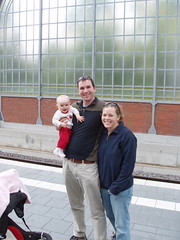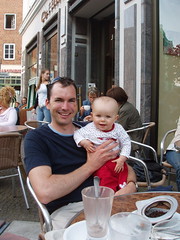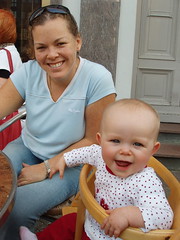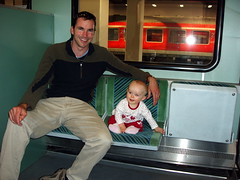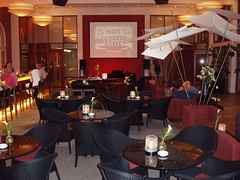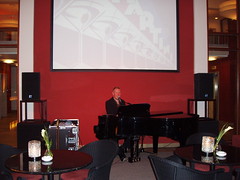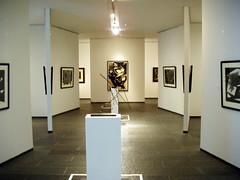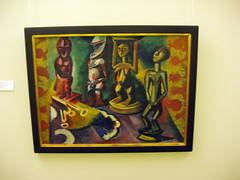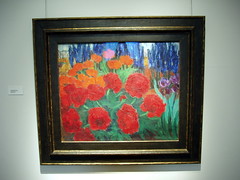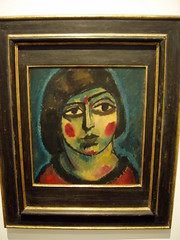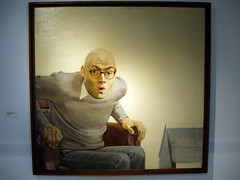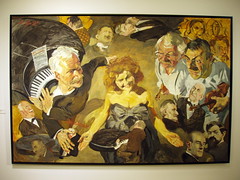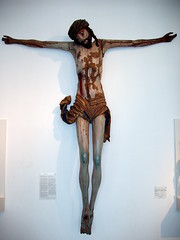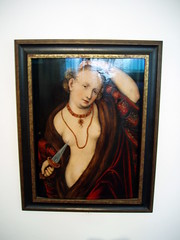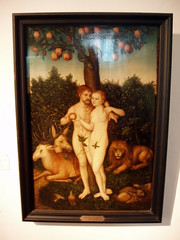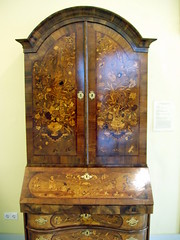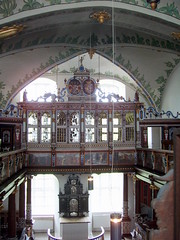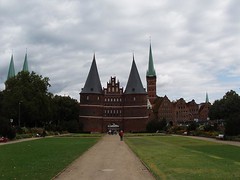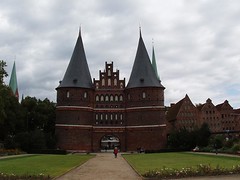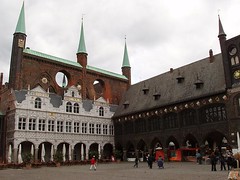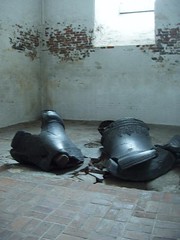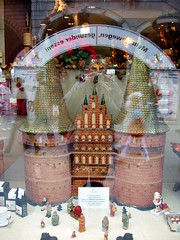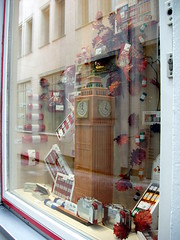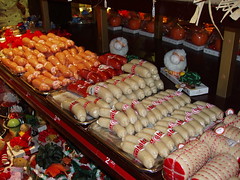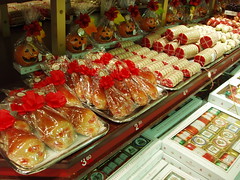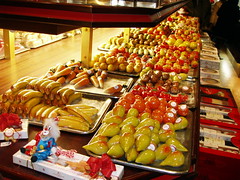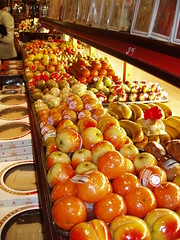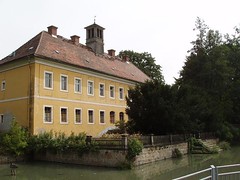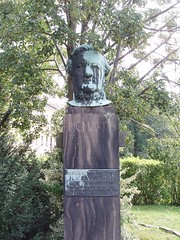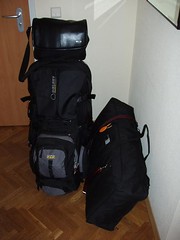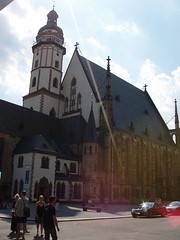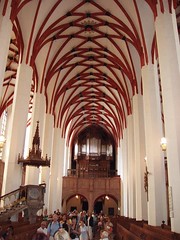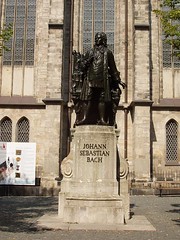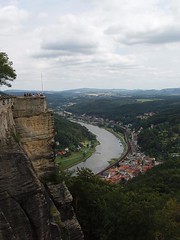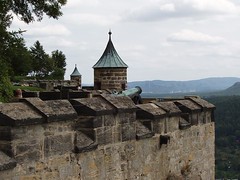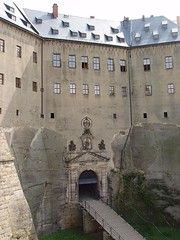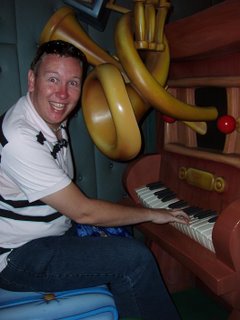Wednesday, September 26, 2007
Dave, Narelle and Charlotte
This weekend, I was very happy to be visited by my friends Dave and Narelle and their 9 month-old, Charlotte. Last time I saw them was a few days before Charlotte was born in January, so it is amazing to see her out in the world now! In January, they were living in Cheltenham, England but are now about to move back to Australia, but took 3 months camping around Europe first, just to see all of the sights! It was so great to see them again and to meet Charlotte (she is a very cute little girl!). We had a great day walking around Luebeck, seeing the sights and enjoying some good German coffee, cake and bratwurst!
Working at A-Rosa, Travemuende
I thought it might be a good idea to write a little about my work schedule here at the A-Rosa Hotel in Travemuende. I play 6 nights a week from 7pm till 11pm. 4 sets of approximately 45 minutes. Most nights I play in the small piano bar which is in the old part of the building and next to the gourmet restaurant.
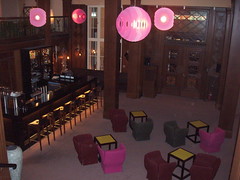
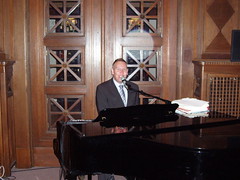
Normally, there is only a small number of people in the bar, who come in for a quiet drink before or after dinner. Quiet different from Howl at the Moon, or my gigs on the the ships.
On a Sunday night, the piano bar is closed and I play in the main foyer bar of the hotel. This is much more modern in style and has a larger audience (though I am still mostly playing background music!)
On a Sunday night, the piano bar is closed and I play in the main foyer bar of the hotel. This is much more modern in style and has a larger audience (though I am still mostly playing background music!)
Schleswig
Last year I travelled to the Schleswig-Holstein State Museum in the small town of Schleswig and was amazed by the collection of artworks contained in the old castle. I was very excited to go back again this year and was not disappointed. I really think this is one of the best art collections I have seen in Europe. Unfortunately, half of the modern art collection was closed, but it still occupied a whole day wandering around the Schloss and associated buildings. Here are some photos of some of my favourite art works from the collection.
The first stop was the Art Nouveau collection - rooms with furniture and paintings all from the same period and style.
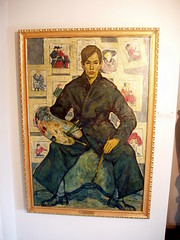
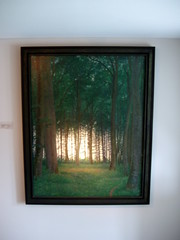
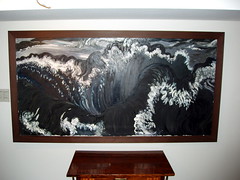
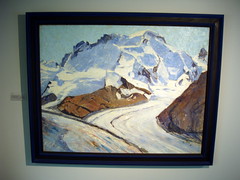
Next was the Modern Art Collection, with a particularly good collection of German Expressionist painters.
They also have an excellent collection of sculptures by Ernst Barlach, who I have decided is one of my favourite artists... (the first 3 photos are of Barlach sculptures, the 4th is by Kathe Koellwitz)
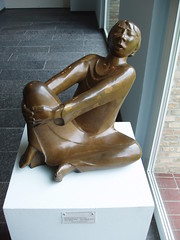
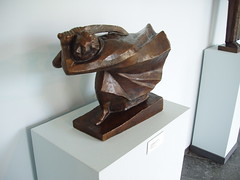
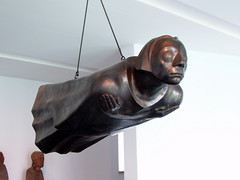
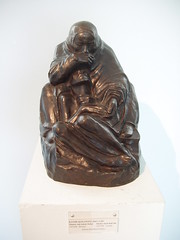




In the old indoor riding area, there was an exhibition of works by Johannes Gruetzke.
The more traditional art collection is historically displayed in the old castle itself. It includes a lot of religious art and an excellent collection of Cranach paintings.
The highlight of the round tour of the castle is the Schlosskappelle (the castle chapel). It is still undergoing reconstruction, but I was able to see much more of it this time (last year it was completely covered in scaffolding!)
The more traditional art collection is historically displayed in the old castle itself. It includes a lot of religious art and an excellent collection of Cranach paintings.
The highlight of the round tour of the castle is the Schlosskappelle (the castle chapel). It is still undergoing reconstruction, but I was able to see much more of it this time (last year it was completely covered in scaffolding!)
Luebeck
Luebeck is the nearest city to Travemuende, the small coastal town where I am currently working. I have made several trips into the city this month and am always struck by how beautiful it is. Last year when I was here, I don't think I appreciated it enough as it was the first European city (other than Rome) I had visited. Now that I have seen a lot more of Europe, I would highly recommend a stop in Luebeck. It's most famous landmark is the medieval city gate, the Halstentor, which was unfortunately covered in scaffolding last year. It used to be featured on one of the German notes (the DM50 i think...) and is pretty cool - it even has a bit of a lean to it... who needs Pisa!
The town square, or marktplatz is surrounded by the Rathaus (town hall) which has been added to over the centuries in a few different styles and is an interesting building.
My favourite building in the city is the Marienkirche. It is the 3rd largest church in Germany (apparently) and is one of my favourites. It was totally destroyed by bombs in the war, but has been reconstructed beautifully.
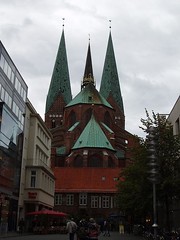
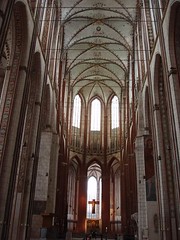
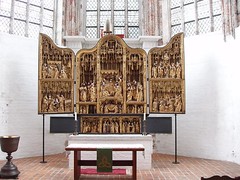
My favourite building in the city is the Marienkirche. It is the 3rd largest church in Germany (apparently) and is one of my favourites. It was totally destroyed by bombs in the war, but has been reconstructed beautifully.



As a memorial to the bombing, the church bells were left where they fell.
One of the great artworks in the church before the bombing was a frieze called the Totentanz. It was painted during the Plague to show that death could affect everyone, regardless of social standing. It showed Death dancing with a young girl as well as archbishops and kings. Unfortunately, it was destroyed in the bombing, but has been replaced with stained glass windows with the same theme.
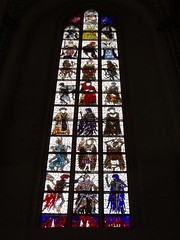
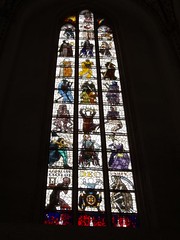
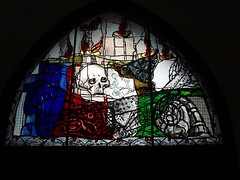



The last feature of the Marienkirche that is pretty cool is outside the church. A statue of the devil sitting outside the church. The accompanying story is in the photo.
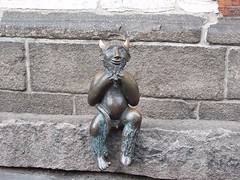
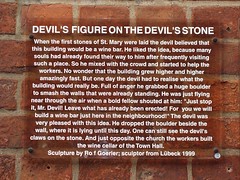
The big tourist attraction of Luebeck is Marzipan. This is where Niederegger invented Marzipan and there is a whole museum devoted to it. The Niederegger store is full of all sorts of marzipan treats and is quite funny in the range. Outside in the windows, are some of the great buildings of the world - remodelled in Marzipan.


The big tourist attraction of Luebeck is Marzipan. This is where Niederegger invented Marzipan and there is a whole museum devoted to it. The Niederegger store is full of all sorts of marzipan treats and is quite funny in the range. Outside in the windows, are some of the great buildings of the world - remodelled in Marzipan.
Sunday, September 09, 2007
Last Days in Dresden
The end of the month always means packing up and organising things to be ready to leave which is always fun (not!). After Jen left, I made one more trip out of the city (this time by bus!) to a very small town called Graupa to visit the Richard Wagner museum. Wagner spent some time working in Dresden and took a summer vacation out to Graupa, where he sketched some of Lohengrin. There is a small museum there to his life and work. It was marginally more interesting than the Bach Museum in Leipzig, but again, not riveting. There is a pleasant walk around the house with signs along the way outlining Wagner's work and life and the house itself is quite pretty
The last gigs in Dresden were reasonably uneventful and on Saturday the 1st September I was all packed and ready to catch the train to Travemuende. My life in 4 bags...
Dresden and Beyond with Jen
For the last weekend of August, my friend Jen Ryan came to visit me in Dresden. As well as exploring the city again, we took a few side trips out of Dresden that were really interesting.
On Saturday, we bought a Schoenes Wochenende train ticket which is only 33 Euros and allows up to 5 people to travel anywhere in Germany on that day. Pretty amazing value and it's fantastic to see how many people actually use them and explore different parts of the country on weekends. We travelled to the city of Leipzig (about an hour and a half from Dresden) which I had been told was a really interesting city and definitely worth checking out.
To be honest I was a bit disappointed. The old city is full of very modern shopping centres and the Lonely Planet walking tour we took seemed oriented towards people who were only there to shop. It is a strange mix of old and new buildings and it made me realise that one thing I really like about Dresden is how the old city is mostly old style architecture and all of the newer buildings and shops are outside of that area.
We visited some interesting museums while we were there, though. Leipzig is probably most famous for 2 things. It was the home of Johann Sebastian Bach for most of his career and it was in Leipzig that the silent protests against the GDR started, leading to the eventual reunification of Germany.
Our first stop was the Bach Museum, housed in a building directly opposite the Thomaskirche which was where many of his compositions were first performed. Honestly, it was one of the most boring museums I've ever been to and I was very disappointed. It had a very poor collection of things from Bach's life and times and the information was very dense and presented in an extremely boring manner.
The Thomaskirche (pictured) is very beautiful, though and Bach's remains are buried there.
The other 2 museums were much more interesting. The Stasi museum is in the old headquarters of the GDRs Secret Police and it had very interesting exhbitions about how the Stasi spied on anyone suspected of being an enemy of the GDR (which was a large chunk of the population). It gave a very interesting insight into what life in the GDR must have been like. The second museum along the same lines was the Zeitgeschichliches Forum which has lots of displays about the formation of the GDR and the events leading to its dissolution and reunification. Although they were rebuilding many parts of the display and the signage in english was scarce, it really helped me understand a period of history that I did not know much about.
On Sunday, we looked around some of Dresden's major sights and were lucky enough to get tickets into the Historisches Gruenes Gewoelbe. I say lucky, because pre-ordering tickets was only possible about 6 months in advance and otherwise you have to queue at around 9am to get some of the tickets that are only sold on the day. The tickets have a very specific time on them (ours was 4.00pm to 4.15pm) during which you can enter the museum and the tickets are not transferable. We didn't queue for tickets, but met a man who was selling some on the steps of the Tourist Information Centre (not allowed, but hey, we got tickets!).
The Gruenes Gewoelbe is the display of the treasures of the Saxon Kings and it is displayed in rooms in the Palace that have been restored to how they originally looked. The Gewoelbe was set up by August the Strong (a relative of Frederic the Bitten) and was one of the first museums of its kind. The rooms are organised according to the type of treasure. There is a jewel room, a gold room, an ivory room etc. Half of the rooms survived the bombing of Dresden, but the others were destroyed. They have all been rebuilt and restored and were only reopened in the last few years. It is a really amazing collection of beautiful things and the rooms are really beautiful too.
On Monday, we took a trip to Koenigstein. A small town down the Elbe from Dresden in a region called the Saechsische Schweiz (Saxon Switzerland). The area has beautiful landscapes and is a very popular hiking region for Dresdners. We considered taking a riverboat (a paddlesteamer) but found out it took 5 1/2 hours when the train took 45 minutes. We figured it was better to spend the time looking around when we got there.
The biggest drawcard in Koenigstein is the fortress built towering over the town. It was a stronghold of the Saxon Princes and was considered impenetrable. It was never attacked, but became a study in military architecture. It has amazing views over the region and was a really interesting place to visit.
Of course, Monday night was half-a-pig night again! Thanks so much for visiting, Jen! It was so great to see you and explore even more of this beautiful city!
